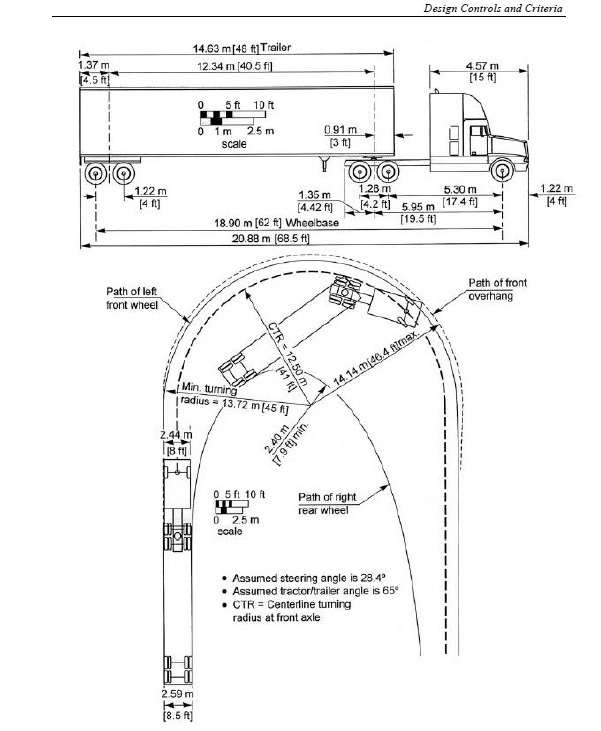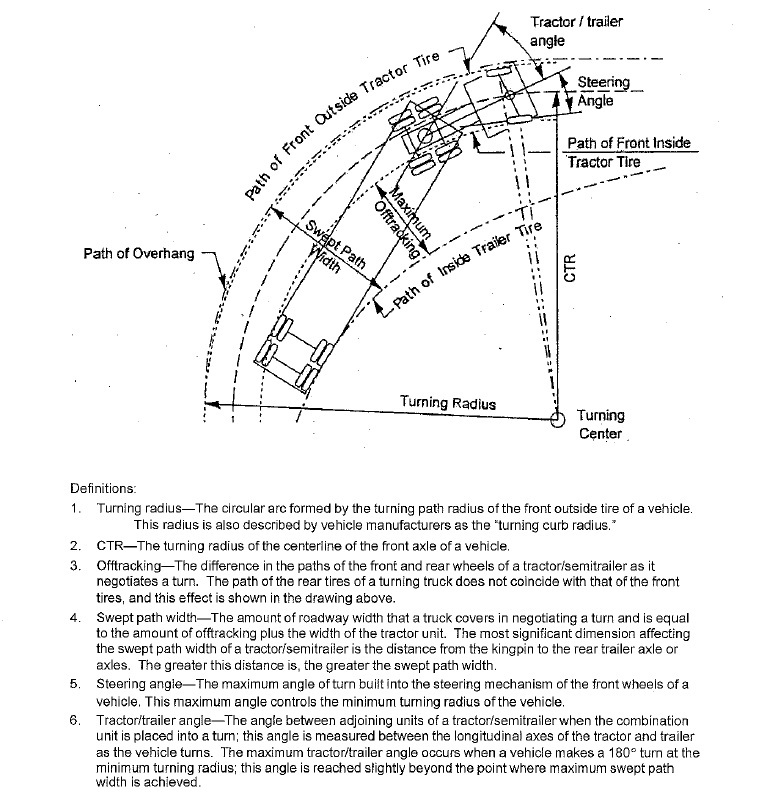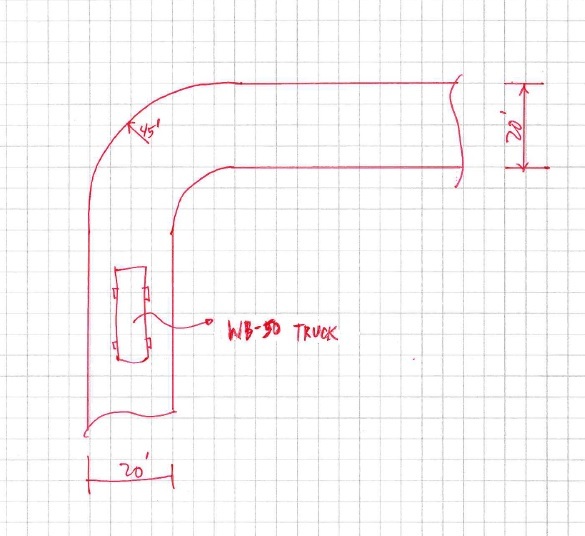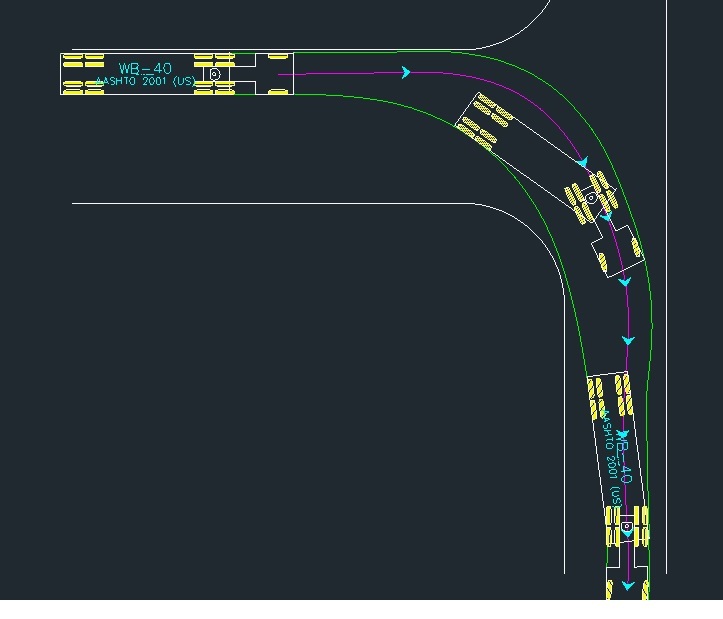I always thought 20' lane width is good enough but I'll be using smaller lane width this time.
This drawing is confusing as far as minimum road width required for 18-wheeler turning 90 degrees.
If I follow path of right - rear wheel, it looks like I need more than 20' road width?
This doesn't make sense.

This drawing is confusing as far as minimum road width required for 18-wheeler turning 90 degrees.
If I follow path of right - rear wheel, it looks like I need more than 20' road width?
This doesn't make sense.





